The Residents | Homer Flynn | Interview
The Residents are hailed as the foremost avant-garde group of the last 50 years.
They brought Dadaism into the 21st century with their bizarre blending of experimental music, performance art, theatre, opera, film, and even video games all rolled into the proverbial gesamtkunstwerk! Perhaps best known for their iconic ‘Eyeball Heads’ adorned with top hats, the group has managed to remain shrouded in mystery and anonymity since their debut album, ‘Meet the Residents,’ in 1974. Homer Flynn was a founding member of The Residents as well as the collective’s main graphic designer and art director. He runs the Cryptic Corporation public relations firm and currently serves as the manager, spokesman, and mouthpiece for the more reserved members and helps to retain their anonymity by speaking to outsiders on their behalf…
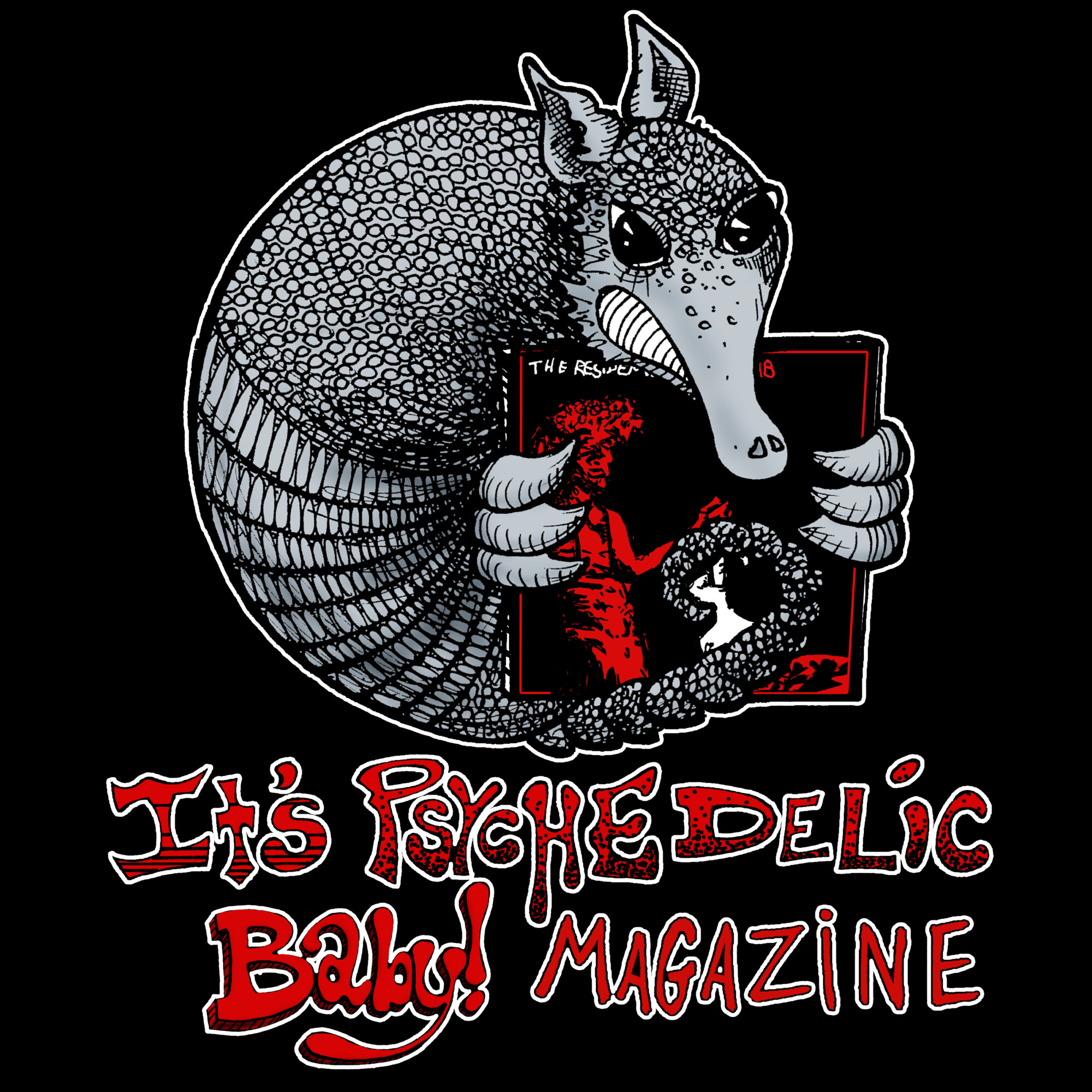
“A huge influence on the Residents, during their formative years, was Sun Ra”
To start off, let’s talk about the 50th anniversary Secret Show that went on earlier this year. How long in advance was this show planned? How long did it take to put together and what was that like?
Homer Flynn: It was planned at least 6 to 8 or maybe 9 months ahead of the actual performance. I’m trying to remember who came up with the idea… Residents are working with a guy now, Edwin Outwater, and Edwin is the director of the San Francisco Conservatory [of music] and he is also a classical music conductor and a huge Residents fan. He thought it would be a great idea to do this there at the Conservatory as the 50th anniversary. But, you know, John Sanborn was very much into it. Steve Saporito, who’s the producer, was very much into it. It was kind of the four of us that really made it happen.
As far as being a ‘Secret Show,’ how were audience members chosen and invited? I mean, did they know that they were going to a Residents show or was it a secret even from them?
The reason why it was a Secret Show is that the Residents did a tour immediately after this and a lot of times, promoters don’t like you playing another show in the same town to the same audience within say six months. And so, ultimately, the reason why we had to make it a Secret Show was to not compete with the show that came up a few months later. Mainly the way we promoted it was through the Residents website and through social media, but we couldn’t really do any major promotion or ads for it or anything like that. So, I don’t know that the audience actually knew that it was a Secret Show in that way.
What was your involvement in the show? I mean, I know you’re a visual artist and designer. Did you design any costumes or animations or visuals for the event?
Well, you know, I’m really a visual artist but at the same time, I’m really the Residents’ manager. In a way, I was kind of a producer on this show, kind of a little bit of everything. I did design the Residents’ costumes that they wore for this and I did a little bit of other stuff. I did a kind of a promotional piece, like an ad kind of thing, but it was only on social media and the Residents website.
I was really intrigued by the… I don’t know what to call them but the leather platypus men that were on stage. Was that a new creation or old? What was the story with those guys?
They are actually ducks. Yeah, and that was kind of a holdover. The Residents did their ‘Duck Stab’ album and ‘Night Flight’ had an Anniversary Program or 40th Anniversary Celebration about six months or so before the Secret Show. So, the whole thing was done and shot. The ‘Duck Stab’ album is a longtime fan favorite. It’s been kind of a fan favorite forever. The Residents had seven performance or touring opportunities over three years before this and every time something would get booked – Covid Lockdown, Covid Lockdown, Covid Lockdown. The tour would get scheduled, Europe and the States, and then it never happened. Covid Lockdown. So, ultimately, each time another one would happen, things would get slightly changed because the first one to get canceled was when the Residents had just released their ‘Metal, Meat & Bone’ album. So that was the main thing to be promoting.
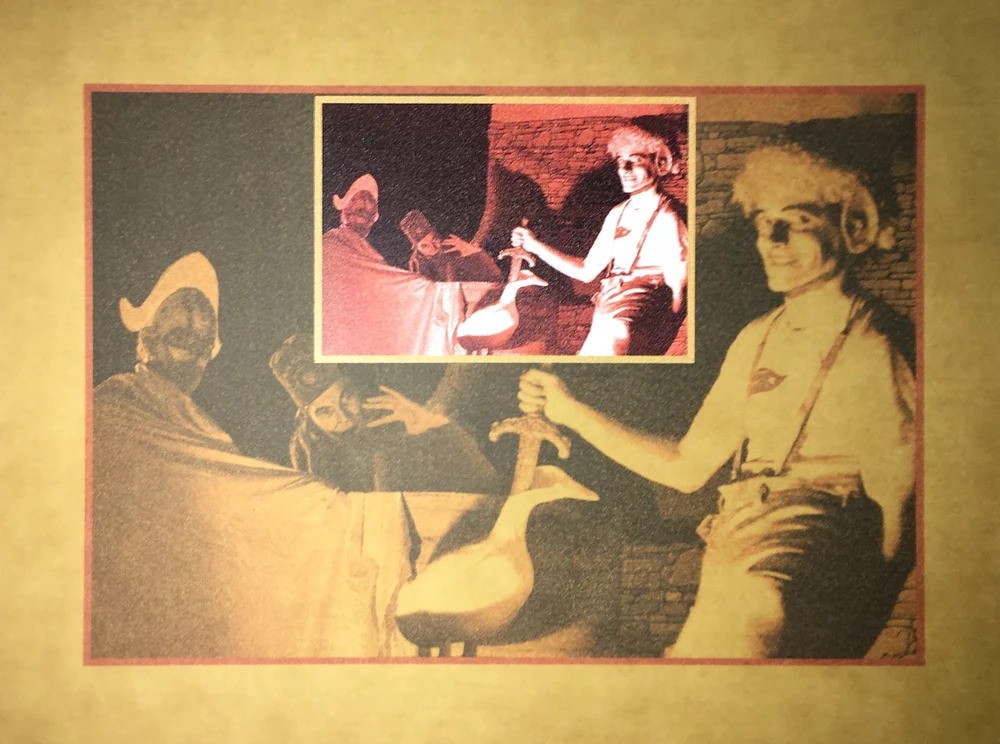
Six months or a year later, that wasn’t as relevant as it was. So, things got shifted around. Ultimately, ‘Duck Stab’ was just gonna be several songs on an encore but as the 50th anniversary got closer and closer, it became more and more of a priority to be doing stuff from their whole career, not just something like ‘Metal, Meat & Bone’. So, ultimately, they had worked up all of ‘Ducks Stab’ and suggested to ‘Night Flight’ that they shoot that as a special and that’s what happened. There was a recording studio in Oakland that’s a really big 24th street studio. Very nice recording studio, almost old school. You don’t really see those kinds of things that much anymore. They offered it to the Residents to go in and perform ‘Duck Stab’ live in the studio and John Sanborn, who was the video artist that we worked with on the Secret Show, came in and shot it. We wanted to bring in some dancers just to make it more interesting than just four people playing musical instruments. That’s when the whole duck, you know, platypus, whatever – that’s when that came about. And then it was something that was still around when the Secret Show happened. So, we just brought them back.
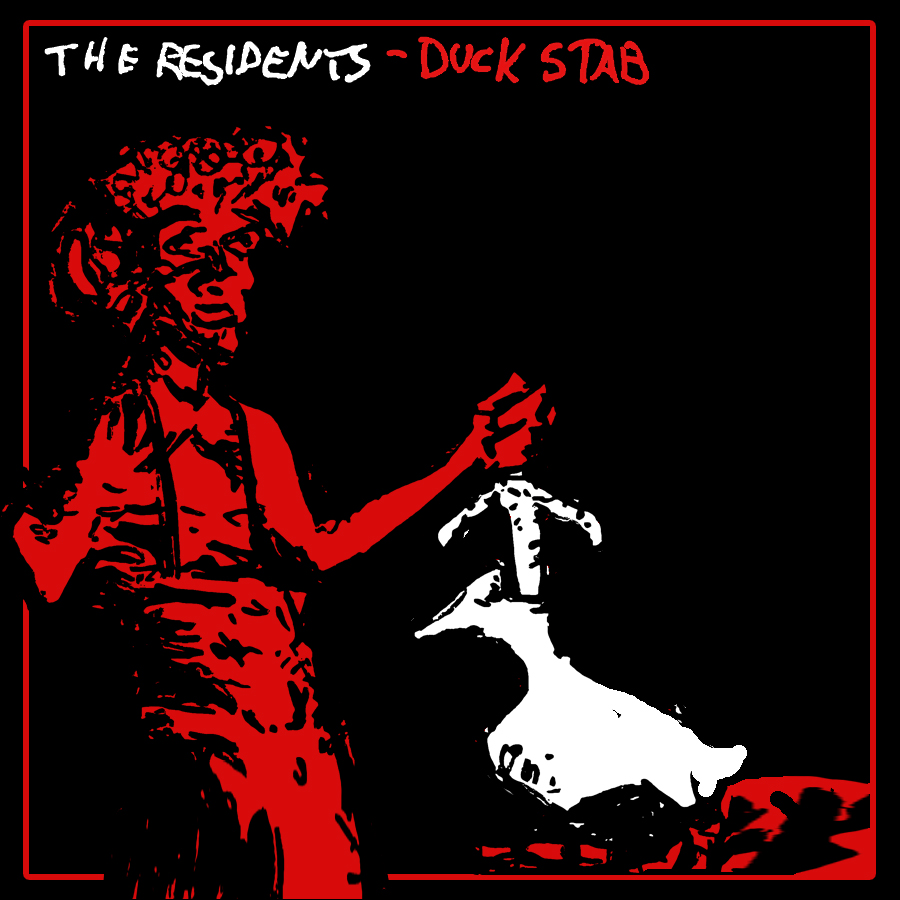
As a 40-year-old, my first kind of introduction to the Residents was through Primus/Les Claypool and hearing ‘Constantinople’ and ‘Hello Skinny’. Of course, I didn’t even realize that those were covers until much later when I did eventually hear the Residents. And so, it was really cool to see Les Claypool come out on stage and participate in the Secret Show. Has he been involved with the band prior to that?
Small things kind of intermittent off and on. Primus, this was 20 years or so ago, were doing some kind of performance on MacWorld. Promoting something and they wanted the Residents to join them and they’ve been on small things like that off and on. The Residents former lead singer, Randy Rose, had an internet series that he was doing called RandyLand for a while. And they wanted to shoot something kind of out in the woods. Les lives pretty far out. He has a… I don’t know if I would call it a ranch but he has a fairly large piece of land 30 or 40 miles north of San Francisco. So, we contacted Les to see if it was ok to go and shoot Randy being weird on his property.
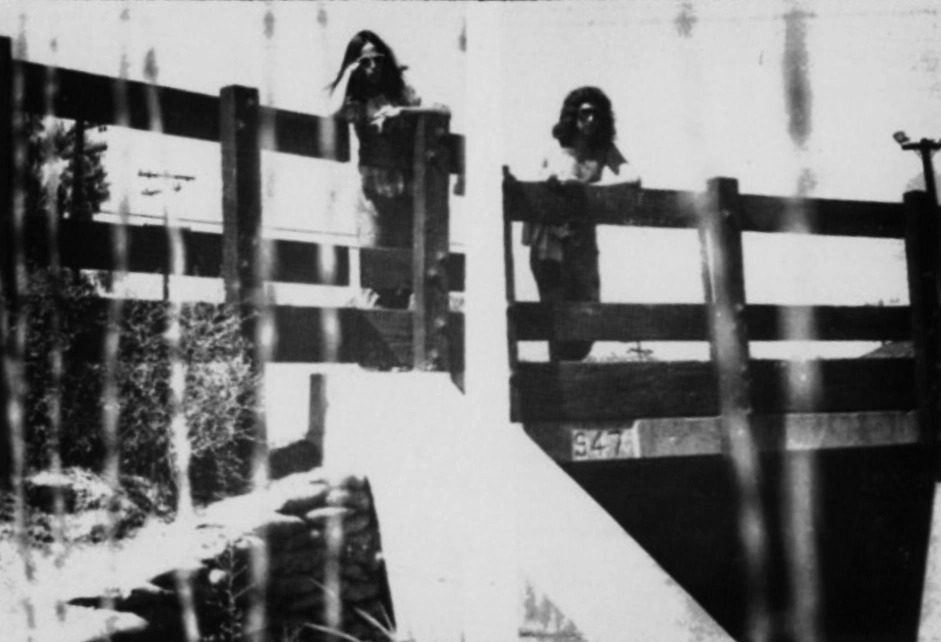
Oh right. Yeah. Rancho Relaxo I believe is what it is called. The Residents definitely had a strong influence on Claypool. Are there any other musicians or bands that you feel have made good usage of influence from the Residents?
I think there’ve been a lot of people that have been influenced but, honestly, most people don’t cop to it. There was talk at one point that Tom Waits was influenced a lot by the Residents. But, once again, I don’t know that he ever copped to it. So, whether that was actually true or not, I don’t know. But he had a period when he was doing much more “out” kind of stuff and that was when that comparison was made.
Yeah, I could see that. His ‘80s to early ‘90s stuff was pretty experimental. What other musicians have been a big influence on the Residents themselves?
A huge influence on the Residents, during their formative years, was Sun Ra. They loved Sun Ra and they loved the way that a Sun Ra concert would become an event. Sun Ra would take a hubcap and hold it up over his head like it was some kind of badge of honor, and he had the attitude that would go with it that this is something important and the Residents love that. They love the fact that he would project this feeling of specialness and importance in what he did. His music was great, but it wasn’t just music for him. It was a show! It was an event! So, he was a big influence. Frank Zappa was an influence. Captain Beefheart was an influence. I know Moondog was a big influence. Surprisingly, one of the Residents was really into Barry White. Barry White was a big influence at one point. But their taste is very eclectic and kind of all over the map to some extent. So, they would draw inspiration from a lot of different places.
It shows. It’s very eclectic. What kind of music have you yourself been listening to the last year or so? What are you into?
Well, there is a Finnish band called Alamaailman Vasarat and they’re maybe a six or seven piece combo with horns and what they do is kind of like a combination of Eastern European sound but with a kind of punk energy behind it and then it kind of comes together in a really really interesting way. I find it extremely unique. There’s a Ukrainian group called DakhaBrakha and I have really enjoyed them quite a bit. I think it’s three women and a guy but, once again, I like music that in a way has certain ethnic sensibilities about it but then it’s brought into the present. It’s not just trying to play what people were playing 20, or 30, or 50 years ago. It’s taking some of those values and sensibilities but modernizing and that’s the kind of stuff that I like a lot.
“A brand-new album that is almost finished is called ‘Doctor Dark'”
I’ll have to look them up. I’m not familiar with either of those bands but I’ll check them out. What is next for the Residents?
Right now, they are working on their own original stuff and have a brand-new album that is almost finished. It’s called ‘Doctor Dark’ and it’s kind of a combination of more symphonic stuff on one hand and then kind of more heavy metal kind of stuff on the other. Edwin Outwater is gonna be arranging and having some of his students play some of the more orchestral parts of it. One of the things that the Residents have been into a lot is their ‘God in Three Persons’ album that was originally released in 1988. I had a former partner that I worked with for between 40 and 45 years. His name is Hardy Fox and of everything that the Residents had ever done, ‘God in Three Persons’ was at the top of the list of things that we felt like could be taken to the next step, you know? Beyond the album – some live performance, the theater, video, whatever… and it took 30 years but, we had a world premiere of that at the Museum of Modern Art in New York in 2020. It was just ahead of the first lockdown. Barely got it in. And that was another one when I talked about those seven performance opportunities that got postponed or rescheduled. Two or three of those were ‘God in Three Persons’ and everyone really wanted to do it. It was a beautiful show. But we just did a couple of performances with it in San Francisco at a beautiful theater and we did one in LA but we were scheduled to be doing some in Germany and that got shut down. But now a short tour in the UK has been booked and so the residents will be taking ‘God in Three Persons’ to the UK and doing five shows in the UK and then one show in Athens, Greece and that will be in April and everybody is extremely excited about that. [Edit: The 2024 God in Three Persons Tour has been canceled “due to unforeseen circumstances”]
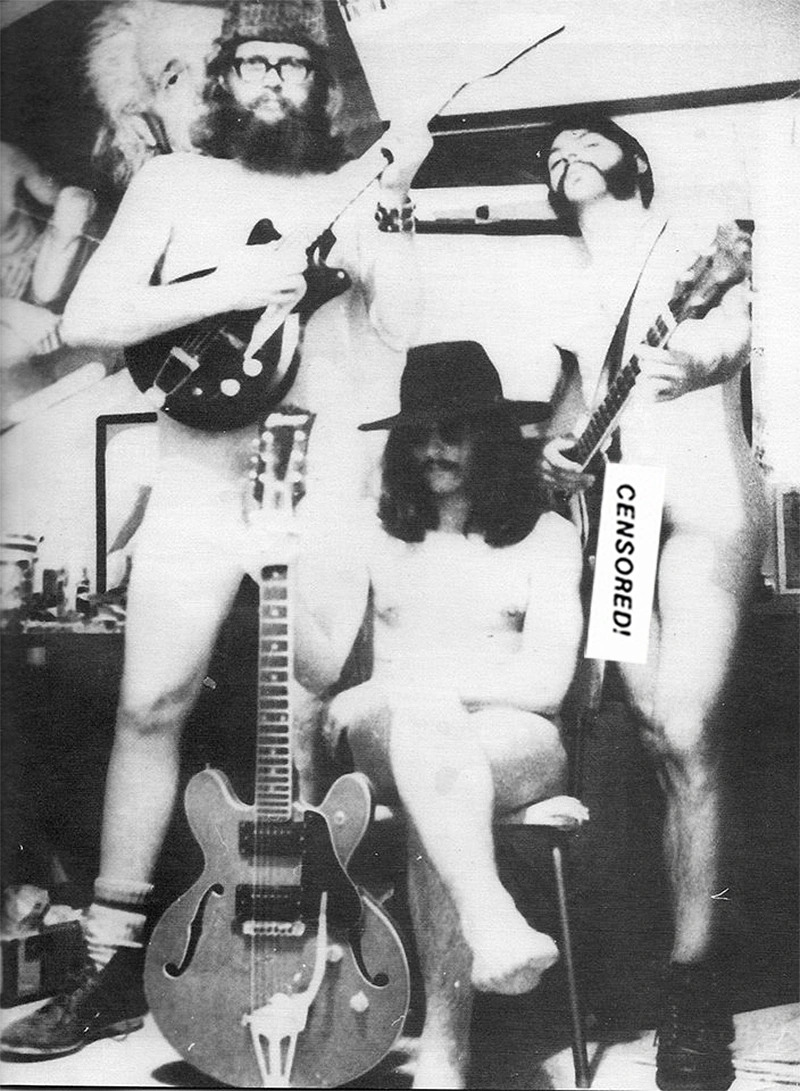
That sounds amazing! If I can jump back a little bit to the new album that’s in the works; is that expected to be released in 2024 or more like 2025?
Well, we’re hoping for summer or fall of 2024. It’s very close to being done. I mean, everything is written and demos have been done and now it’s more a matter of bringing people in, guest artists and stuff, and bring in kind of fresh energy and more perspective in terms of the different parts and, once again, the orchestrations which will be done by Edwin.
As someone that’s been involved in music for so long, did you find it surprising when the whole re-emergence of vinyl came back around and became just so much more popular this last decade or so?
Yeah, that pretty much came out of nowhere. Historically, music starting with these cylinder discs from like the 1920s or whenever the hell they were, I mean, the progress of music, at least in terms of a product, was one form after another after another, each of which was more technologically advanced than whatever came before it. It was 78 and then it was 45s, then it was 33s, and then it was CDs, et cetera, et cetera. It basically looked like this is gonna be the progression forever. There’ll be constantly new forms coming up and then, all of a sudden, from CDs it started going to streaming and it’s interesting to me that so many young people… not so much “rejected” streaming, because streaming is still there, but there’s something about holding an album in your hand. There’s something very satisfying about, you know, listening to music and to be able to read the liner notes and look at the album cover and stuff like that. CDs are fine but, I don’t know, there’s just something that’s very satisfying about the LP but I certainly didn’t expect it. I honestly haven’t had a record player since the eighties. I mean, I have one here now but it’s small and funky and it’s something that I bought really as a prop for a video because I wanted to be able to shoot the record spinning. Most of my music listening these days comes from streaming. I listen to Spotify. Not that I’m a huge Spotify fan; I can find plenty wrong with it and I’m sure I do not like the way that they have managed to virtually cheat artists out of their royalties. But it’s a good source of finding new music.
Yeah, ideally, most people would use it in that way to “discover” new music and then buy the physical media. Anyway, In the ‘70s and ‘80s, the Residents used a lot of state-of-the-art technologies used to create sounds and videos and this must have been pretty expensive stuff back then. How were you able to fund this without being on a major record label?
That’s a good question and as I look back in retrospect… I kind of wonder about that myself. The Residents didn’t really tour until the early ‘80s and part of the reason why they didn’t tour was that they felt like so much of their sound was based on multi-track recording and they could create a really interesting and unique sound that way, but they didn’t feel confident that they could reproduce that live. And then samplers came along and when samplers came along, the Residents could sample their own recordings and while they couldn’t exactly reproduce what they could do in the studio, they could make a close approximation of it. So, one of the first, if not the first, readily available sampler was the Emulator that came from E-mu Systems. I think Stevie Wonder supposedly had Emulator number 003 and the Residents had emulator number 005, something like that, and I think those things cost like $5,000 back in the early ‘80s. I’m trying to remember now where that money came from. The first time that they went on tour, they did their Mole Show Tour in ‘83 and ’84, and they actually had two Emulators that they were playing. All the sounds were on floppy disk, and you put the floppy disk in and loaded it into the machine and it was kind of awkward and clumsy in certain ways, but it gave you an infinite variety of sounds that you could create on a keyboard instrument.
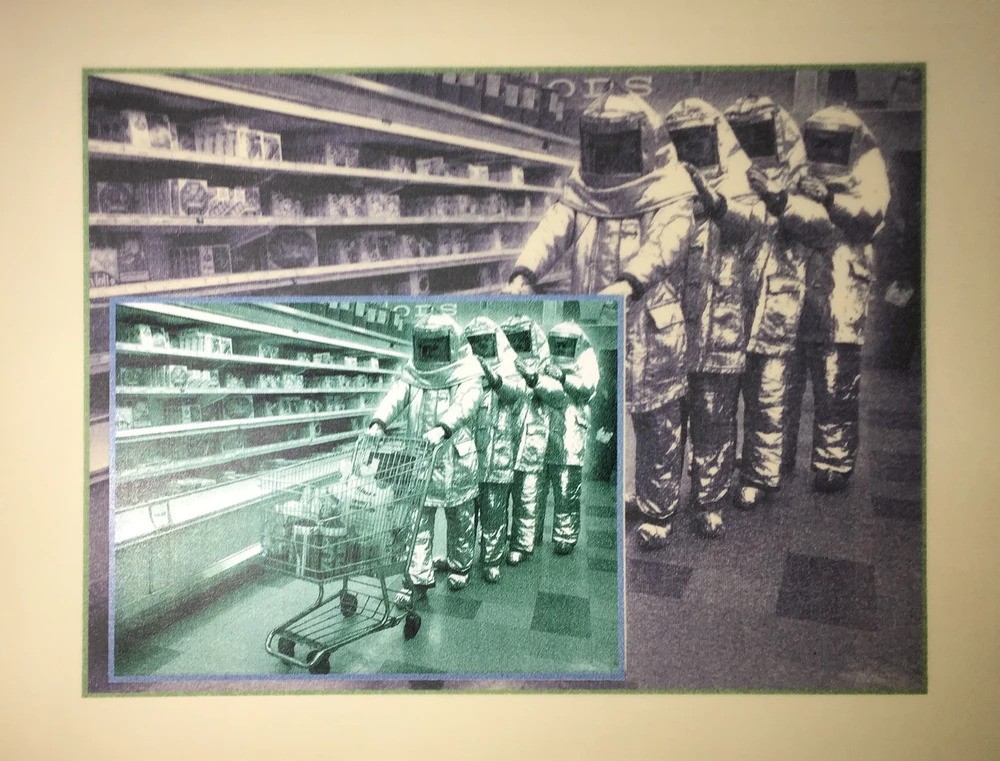
That’s interesting for sure. Somewhat off track here, but as an artist and designer yourself, what’s your opinion of AI art? Have you utilized it to any extent yourself?
I’m very interested in AI art and I have used it and utilized it. I mean, it is very controversial from my point of view. I really see it as a tool. What I’ve been doing with it recently is I’ve been using it to create all the packaging for ‘Doctor Dark,’ the new album. The album primarily has three characters in it and so I’ve been trying to create visual representations of these characters with AI art and I’ve been pretty successful with it. I’ve been happy with it. I’ve also gone in and created Residents classic promo pictures. [shows framed example] I love this. It’s pretty wacky and it’s cool. That’s based on a really old Residents promotional picture called “The Residents Stock Up for a Wild Weekend”. We actually went into a grocery store and the Residents were wearing these like asbestos suits and all four of them pushing a grocery cart. So, when you see this, if you think about that, you can kind of see that’s the shelves of the grocery store back in the background. This is kind of a mutated shopping cart down here and this is the Residents back behind. I used that photo as a prompt and then the AI program started spitting out iterations of it. A lot of which were very cool. I have a massive stockpile of these kinds of things that I’m kind of trying to figure out what to do with them. We’ve been working with a woman who is a documentary filmmaker and I refer to her as an art documentary filmmaker. Have you seen “Theory of Obscurity,” the documentary on the Residents? It came out in 2015 and it was done by a guy named Don Hardy. I worked very closely with Don. I was kind of the inside person for the Cryptic Corporation and the Residents side. I think it’s a very good documentary. I think it’s for people who haven’t heard of the Residents. It’s a great entry point but Don’s background is journalism and he was a news cameraman for NBC before he spun off his own career as a documentary filmmaker. So, his whole approach, in a way, is that a lot of it is very straightforward from a journalistic standpoint. Whereas, this other woman, Marie Losier, is just wacky. What I really like is that she comes at the Residents from a completely opposite point of view of Don and, ultimately, we create another documentary that would just present a whole different side of the Residents. I’m wanting to make some of these Residents promo pictures, these ones that I’m mutating and creating various versions of, I’m wanting to make a little kind of short film out of those that she could put into her documentary. But if that doesn’t work, I’ll do something else with them. But I’ve been having fun with it.
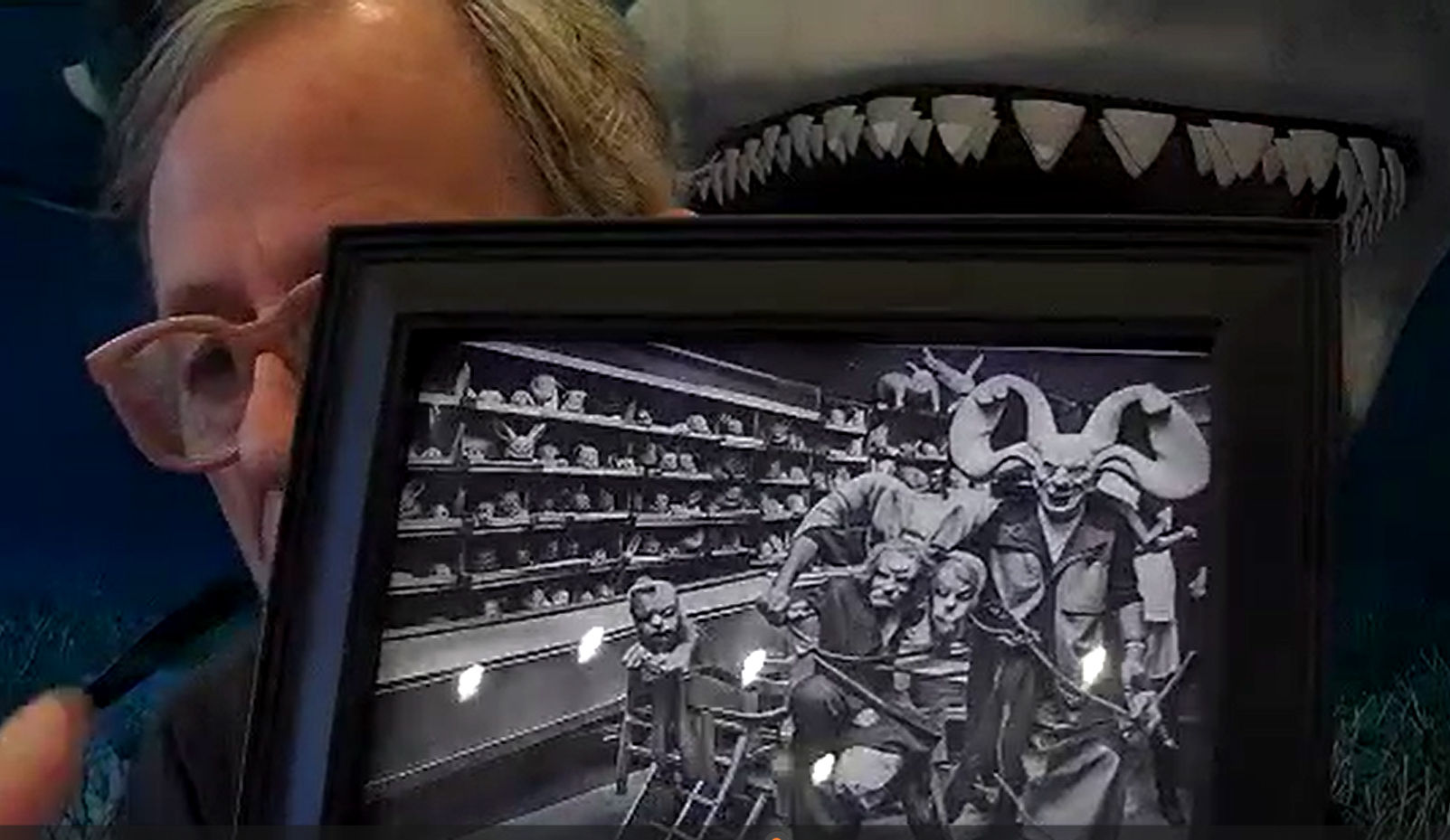
That’s cool. Yeah. Looking forward to that. Can you tell me a little bit about the interactive CD and the ‘Freak Show’ project in the ‘90s?
Yes. Well, ‘Freak Show’ was a kind of interesting evolving project and because they love circus/carnival kind of stuff they had an idea of doing a carnivalesque album but it took them a while to get to the ‘Freak Show’. When I was young, the Louisiana State Fair was in Shreveport and I can remember going when I was 12 years old and going by myself and it was like classic freak show stuff. Gigantic banners and one of my favorites was Grace McDaniels, the mule faced woman. When you walk up outside the freak show, there is a huge, gigantic banner with a painting of a woman with the head of a mule. Who doesn’t want to see that, you know? but at the same time, you go in and what you see is a very kind of pathetic deformed person who’s at such a negative place in her life that she has to sell her abnormality for 25 cents to kids coming in to stare at her. I’m from Shreveport and the Residents are mostly from around there too. So, we all had the same experience and there was a point where they were into this carnival/circus kind of stuff and somebody came up with the idea of “what if we did this about the Freak Show?” And then at that point, the whole project just kind of took off and took on another dimension. The whole idea of creating fictitious circus freaks and then building songs around them. They just became really fascinated with that idea. Then, luckily, once again, like most Residents projects, they put out an album, it gets whatever attention it does and they move on to the next project. ‘Freak Show’ was one that really took on a life of its own. It became a comic book, it became a CD ROM, it became a theater piece, you know, it was a theater piece that played in Prague for a month in 2022. 25 shows or something like that. So, yeah, it was a very successful project.
I was watching some YouTube clips about the video game ‘Bad Day on the Midway’. What can you tell me about that video game project?
Well, I mean, the Residents have never particularly been one for Sequels. But in a way, ‘Freak Show’ was so successful that there was interest, you know? They did the ‘Freak Show’ CD ROM with the Voyager Company and there was a guy that worked for Voyager at that time, named Michael Nash, and he worked with the Residents very closely. He is a really interesting guy, extremely smart. Michael left Voyager, this was when the CD ROM era was really kind of blowing up, and had a deal with Warner Brothers and HBO to create CD ROM material. HBO was seeing CD ROM material as potentially points for TV stuff and so, ultimately, they were wanting Michael’s company, Inscape, to develop CD ROM projects that could then potentially be developed further into a TV series or a movie or whatever. In a lot of ways, the Residents were very happy with ‘Freak Show,’ but they were really exploring the interactive form and they felt like they didn’t take it as far as they saw as possible. So then, ‘Bad Day on the Midway’ became the opportunity to take all that further, which they did, and honestly, I think it’s the superior product myself. But the problem was that the whole CD ROM world, from a product and marketing point of view, just went poof and disappeared. There were people, including the Residents, that were creating CD ROMs that in a way were kind of like interactive independent films. That’s kind of the territory that they were exploring. But the companies that were putting these things out were making them really overpriced at that time. They were $50 or $60 for one of these things. This was 30 years ago and that was a lot of money and most of them weren’t really all that interesting. And so, all the energy creatively started going towards games and gaming and the Residents were not really into that all that much. I mean, there is a game aspect in a way to ‘Bad Day on the Midway’ but it’s very subtle and it’s really more about the characters and it’s more about inhabiting those characters and the play of it is that when you come to a character, you can click on that character and then you become that character and you see the world from their point of view and you can read that character’s thoughts on the screen. It’s kind of like a circus or a carnival or something in that you see everything from the outside. But then, as you become a character, you get that character’s thoughts and you get his or her insight into what that particular area is all about or what another character is all about. So, you play the game by kind of hopping from one character to another. And I thought that was a really very interesting device. But, once again, it got fantastic reviews when it came out and six months later, that whole market was dead and the technology was changing and developing so fast that two years later, three years later, you couldn’t play it on anything. It came out in about ‘95 or ‘96. Mac computers had a huge turnover, system nine to system 10. By the time it got to system 10, you couldn’t play it on anything. It was just kind of crazy. And that was the biggest budgeted project the Residents ever had. They had a $400,000 budget for that back in the mid-nineties. I think it’s a really cool thing. It’s a beautiful piece. We were all working with a guy named Jim Ludke, who was an amazing 3D artist and animator. Did beautiful work for it and it was just so sad that a few years later, you couldn’t watch it. There is actually a website now where someone has reconstructed the whole thing. I mean, talk about a labor of love. You can actually go to that website and play the game.
I read that there were talks of David Lynch turning it into a series. What happened with that?
Well, David was looking for a follow up to Twin Peaks and part of the thing was that, once again, Inscape, the company that put out ‘Bad Day on the Midway,’ they were looking for a product to feed to HBO to do a series with. And all of a sudden, David was looking for a product. So somehow, I don’t remember who made the connection now. I think it was a couple of producers who had done like a kind of 30 minute almost like Twilight Zone kind of series for HBO and I think they were the ones that connected my partner and me and the Residents with David and we had a couple of meetings with him. He was interesting. He was an interesting guy. I like David but the feeling I had was that, you know, the Residents really are collaborators. They love collaborating with people and ultimately, it just seemed like there was not really gonna be any collaboration with David. You know? Anything that happened was gonna be happening in David’s world and David is the center of David’s world. The Residents would be allowed to do soundtrack music for it but not much more than that. Which was kind of disappointing. But yeah, David was an interesting guy. For whatever reason, he never could come up with a concept that he felt would work as an ongoing weekly series. Which I didn’t understand. I mean, it seems to me like there was a lot of material that was just ripe. There were a lot of opportunities there. Two or three years after that, we connected with some more people and these were people who were doing like Saturday Morning TV show animated kind of stuff but their ambitions were more interesting than that, or more compelling than that, and what they wanted to do. They wanted to do a 30-minute animated series based on ‘Bad Day on the Midway’ – the entire ‘Bad Day on the Midway’. So, the entire series is gonna take place in one day. I thought they had really interesting ideas and I had quite a few conversations with them. But then the company, this is Hollywood for you, the company that they were working for that they were hoping would produce this, all of a sudden, they got a job to do a Saturday Morning animated series of Starship Troopers and that was the end of that. The number of stories like this over the past 50 years… there’s a long list of things, a whole lot more things that got talked about and proposed then never happened.
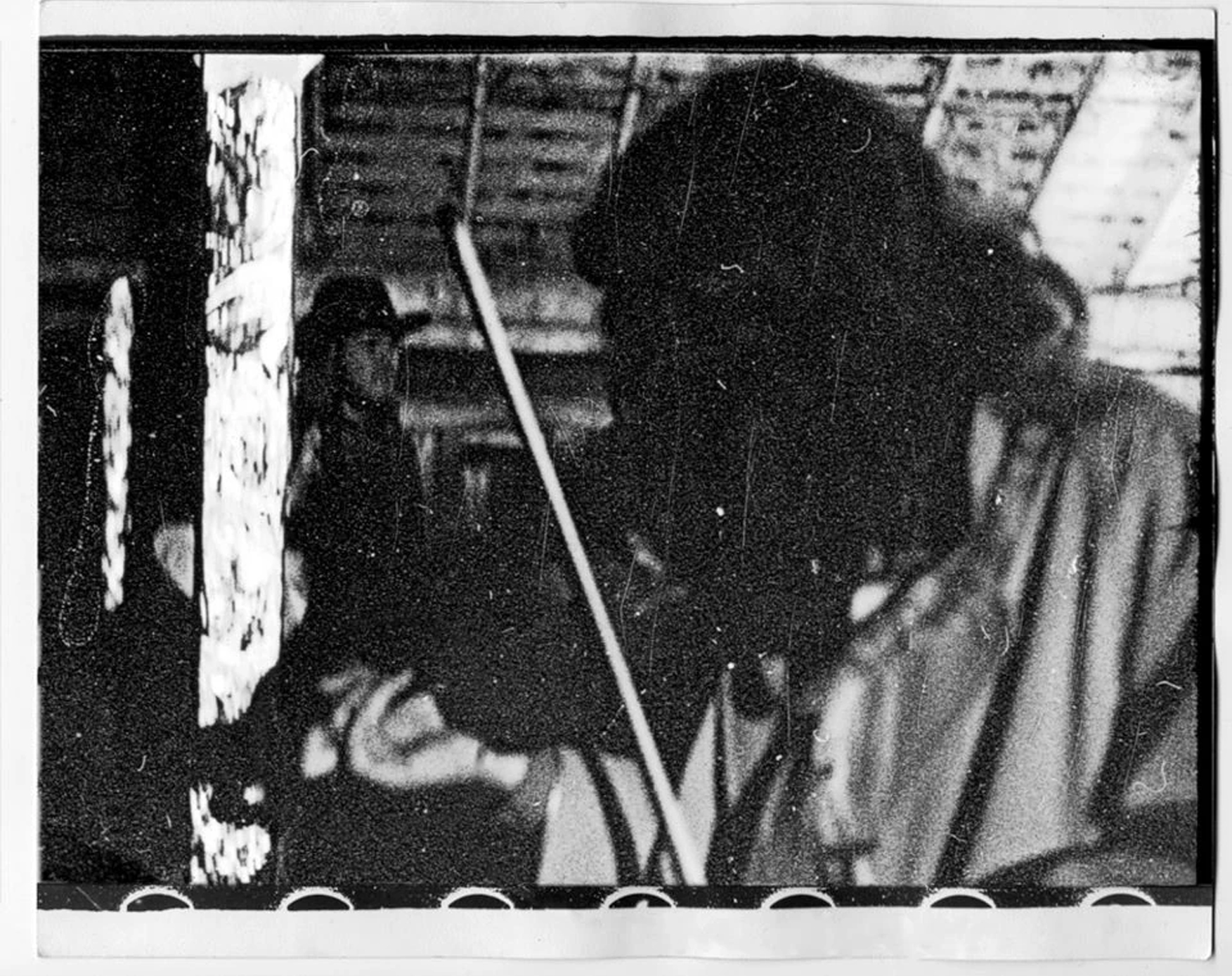
Those all could have been some really amazing projects. It’s a shame. I wanted to ask a little bit about Snakefinger and if there are any favorite quirky stories you’d like to share about him?
Well, I could share the story of where his name came from. His name was Philip Lithman and he was British and he literally just kind of showed up at the Resident’s door one day. This was probably like 1970 or ‘71 and he had met a woman who was a friend of the Residents. She was in the UK and she just kept telling him “oh, if you ever get over to California, you’ve got to meet these guys. You’ll love them! They’re really wacky and crazy and this, that, and the other.” So, at one point he just showed up! Nine times out of 10 when somebody says, “oh, you gotta meet so and so” and you meet them and it’s okay. They’re all right, but you don’t necessarily connect but there was just instant connection with Philip. So, he was here for about six months or something like that and his visa was running out and he wasn’t ready to go back to England yet. And this was pretty heavily hippie times, you know? The Residents were living at that time in San Mateo which is about 20 or 25 miles south of San Francisco. Philip was there with them a lot and they had friends in Eureka, California, 300 miles or so north of San Francisco. They had all these pals up there. They would all drop acid together and freak out and get weird. Ultimately, they decided, or Philip decided, that there was a woman up there he was gonna marry her. And he wasn’t in love with her, this was just strictly an arrangement so that he could stay in the country a little longer. So, there was this big event called Phillip’s Wedding where the Residents played. Everything they were doing at that time was extremely experimental but they got up there, oh God, they were all on acid. And people were taking pictures and something happened to the pictures where they were underexposed. So, there was a photographic material called Kodalith that I used to work with a lot and it’s a very high contrast material. The fact that these photos were very underexposed, you could take them and you could contact print them to Kodalith and that would pull a lot of contrast out of them. And all of a sudden, if you just held up the negative to look at it, you can hardly see anything but that would then actually create an image. One of those was a picture of Philip playing violin and there was something about the way his hands were moving and the contrast of the Kodalith or whatever that one of his fingers was just really weird and twisted and bent around and it was like, “oh, Snakefinger!” and it’s one of those things… it just obviously was right and it just stuck.
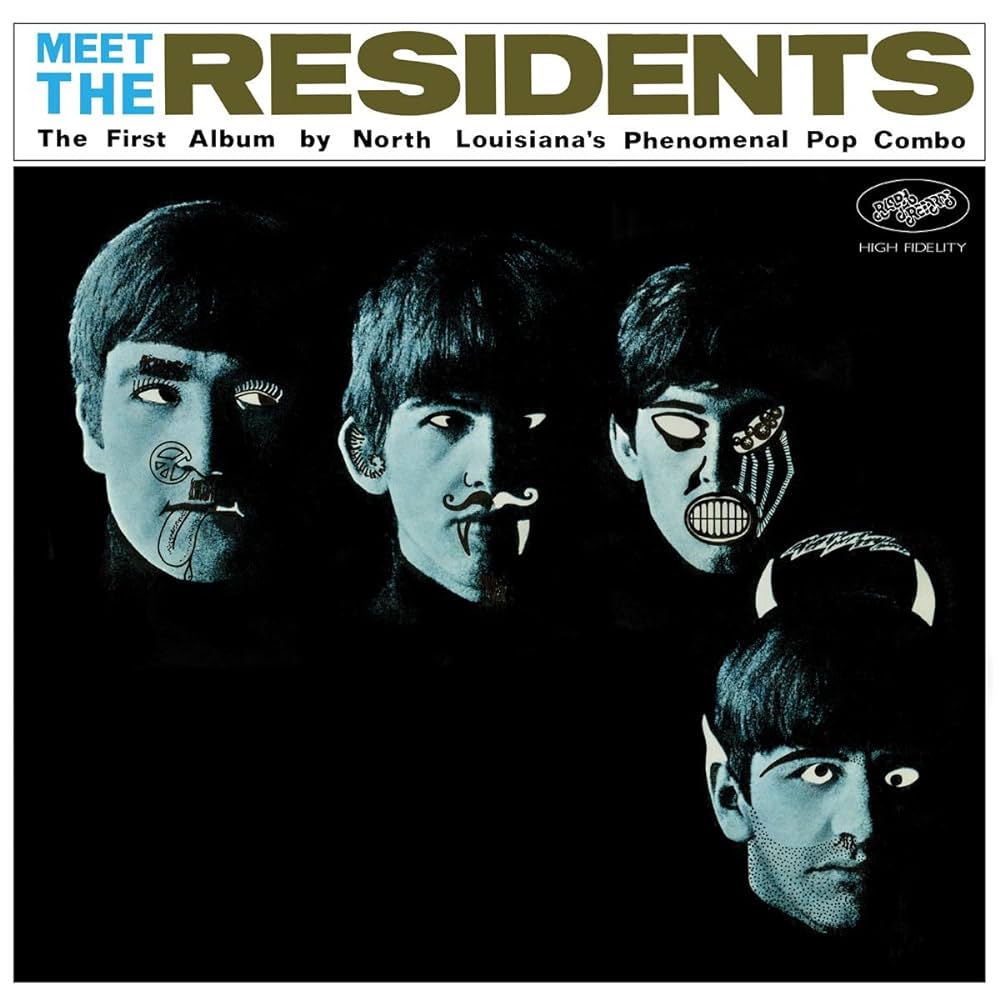
That’s a great origin story! Thanks for sharing. Well, Homer, I appreciate you talking to me. It’s been nice talking to you. Do you have any final words for readers of Psychedelic Baby Magazine?
Well, the only thing that I could say is, I’m sure there are some of them that know the Residents and there are probably a lot of them that don’t. I would just say, take a few minutes, go to residents.com or go to Spotify and do a search for the Residents and you’ll find a black hole that you can fall into and spend forever.
Interview and Illustrations by Justin Jackley
Headline illustration: Justin Jackley
The Residents Official Website / Facebook / Instagram / Twitter

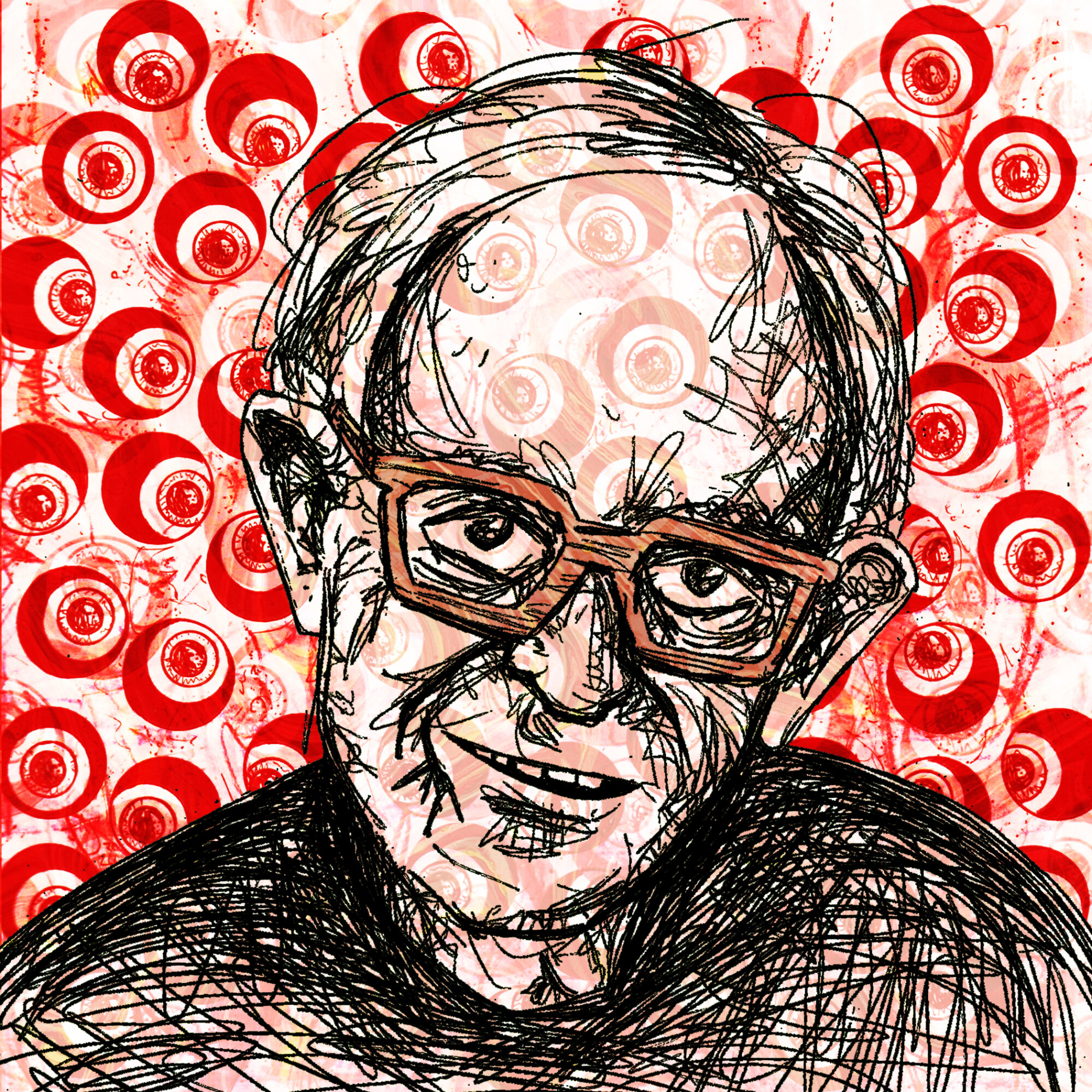
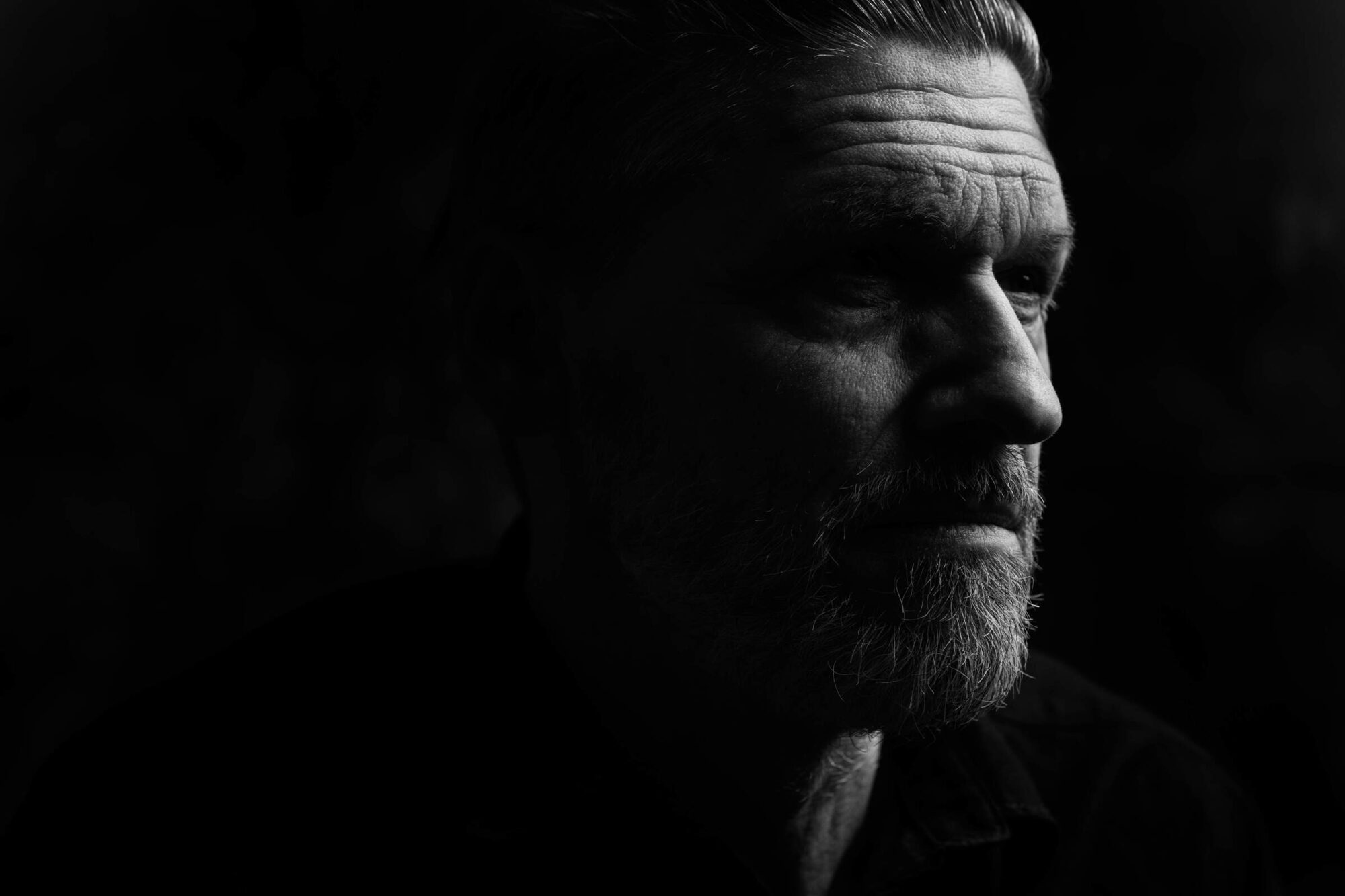
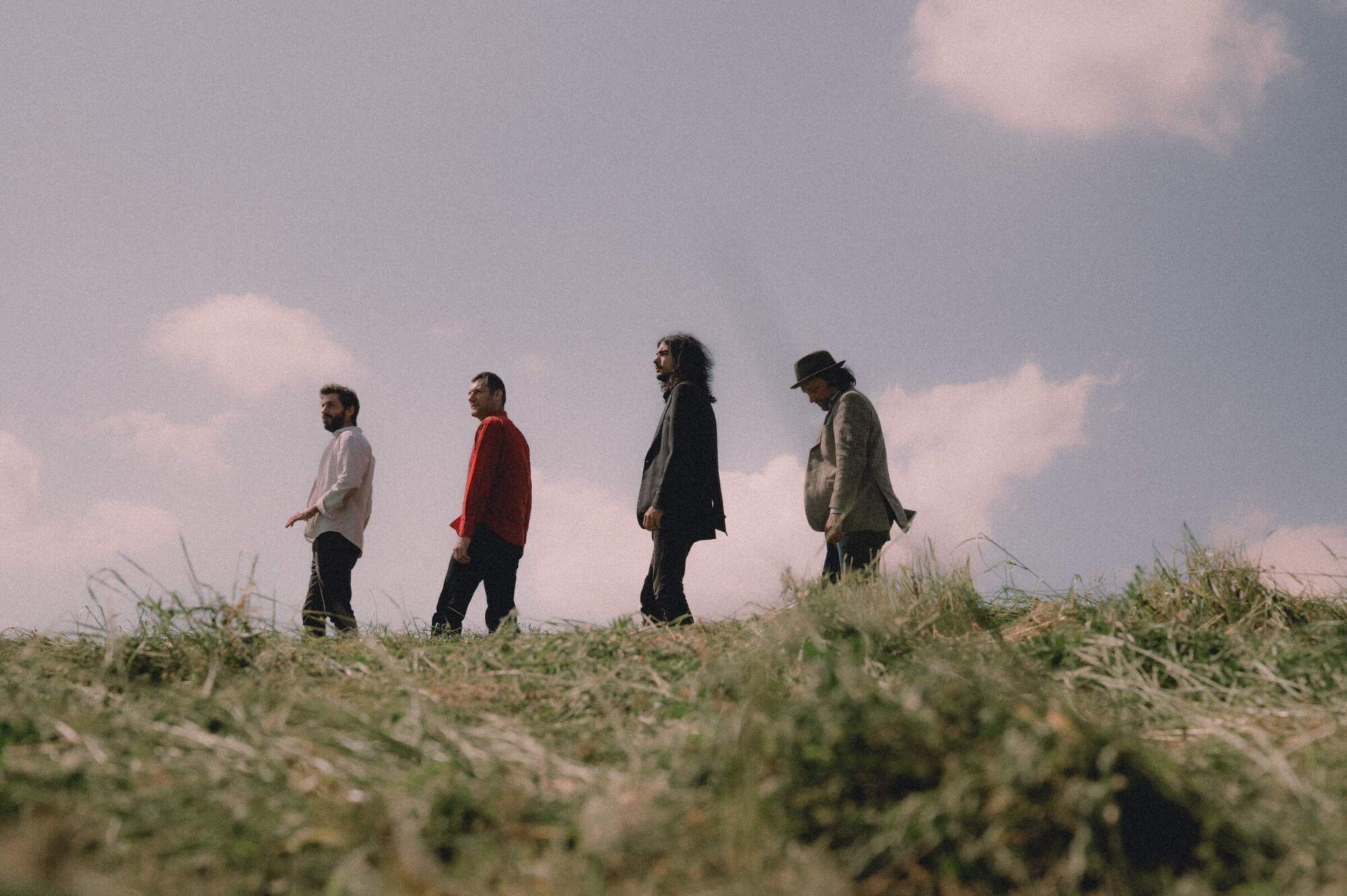
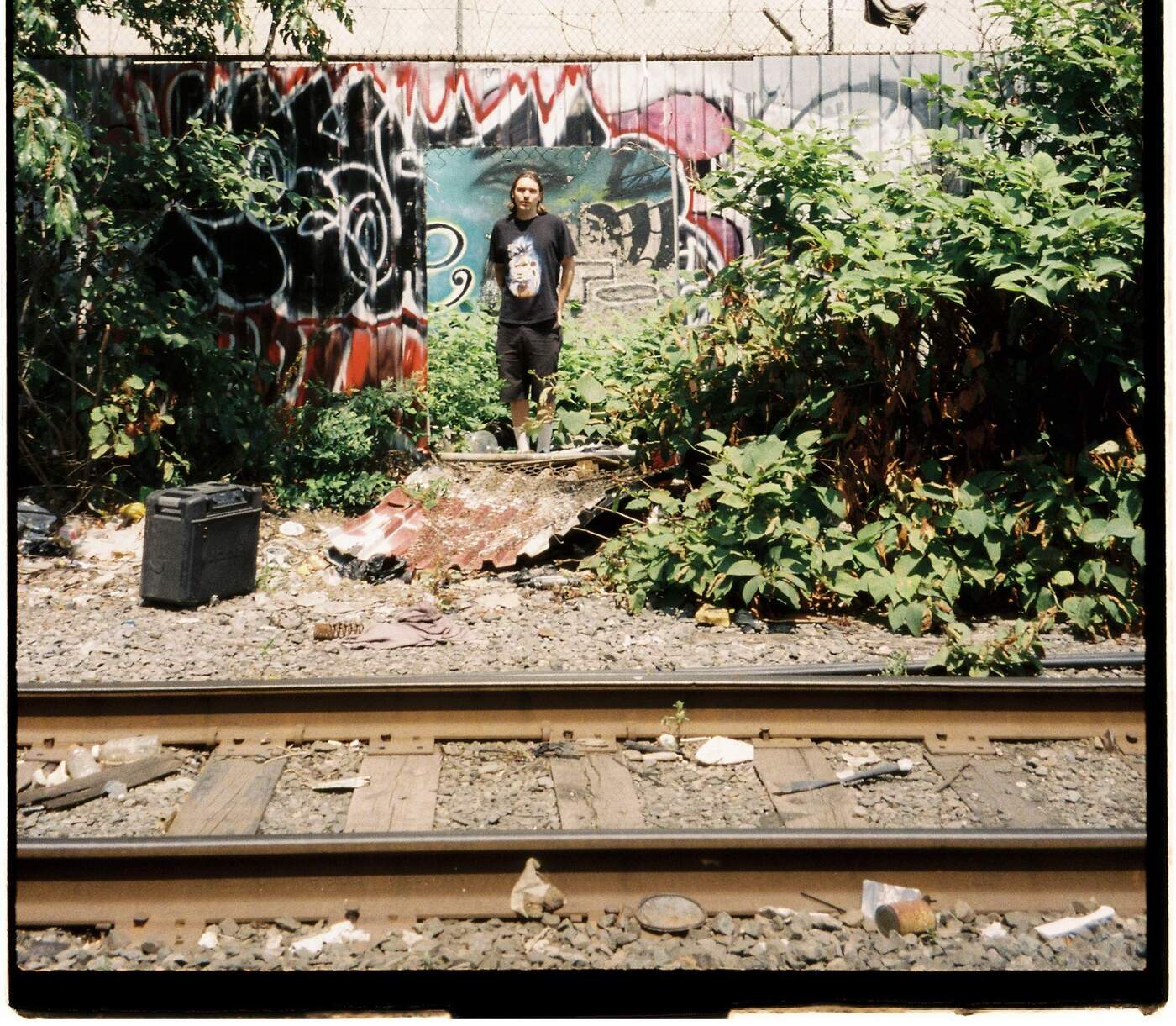
excellent interview… I really liked the part about Snakefinger… I had never heard this anecdote about how he got his nickname… However, he told me that the Residents and him were on acid for a long time during an interview in January 1986, in Montreal (unfortunately, I wasn’t allowed to do an interview with the Residents at that time).